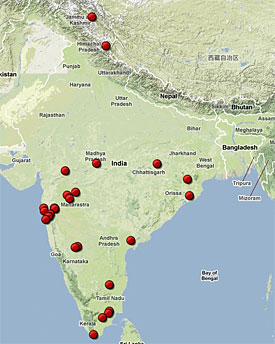World 🢖 Asia 🢖 India 🢖 Andhra Pradesh
Buddhist shrines 🢔 Religious architecture 🢔 Archaeological wonders 🢔 Categories of wonders
Wonder
Undavalli Caves
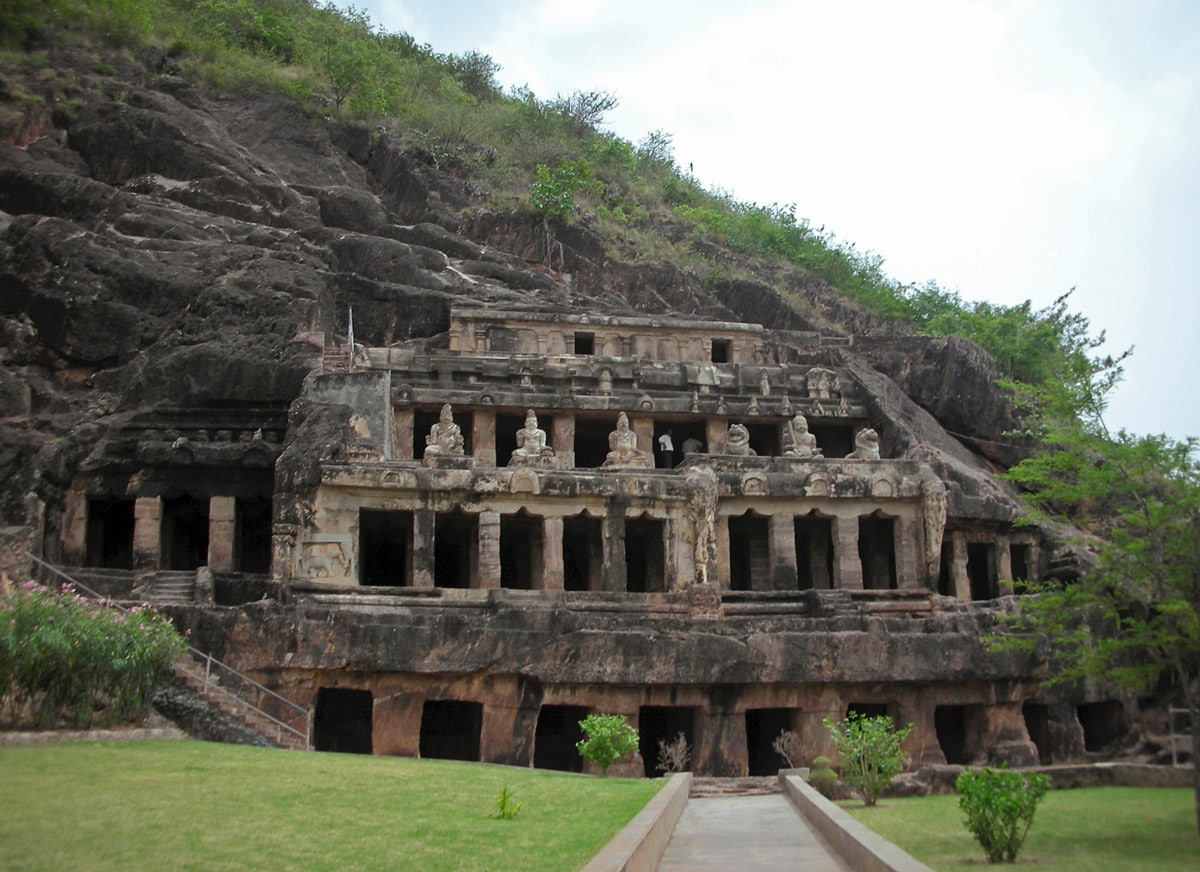
 In short
In short
Hills around Vijayawada are rich with rock-cut architecture but the most magnificent and largest among these monuments is the largest of Undavalli Caves – amazing achievement of engineering, four floors high rock-cut temple with numerous sculptures and murals.
 46.3%
46.3%
GPS coordinates
Location, address
Alternate names
Age
Religion
Map of the site
If you see this after your page is loaded completely, leafletJS files are missing.
 In detail
In detail
History and legend
Caves are associated with Vishnukundina kings – an influential dynasty ruling over a significant part of contemporary India in 420 – 620 AD. Caves were dedicated by local governor Madhava Reddy to the Anantapadmanabha Swamy and Narasimha Swamy temples.
First Vishnukundina kings were supporters of Buddhism and Undavalli Caves were started as Buddhist temples. For a while, they were used by Buddhist monks and there have been preserved some Buddhist statues up to this day.
Later though caves were taken over by Hindus and a major part of the artwork we see here today is related to the Hindu religion.
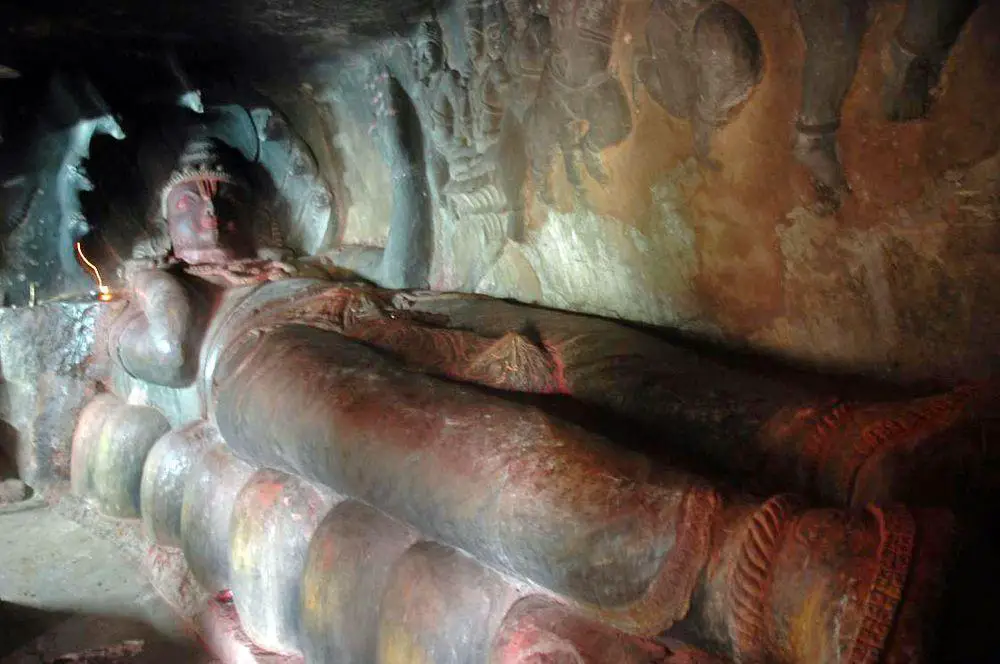
There is an exciting legend about the cave – it tells that here starts 9 kilometers long underground passage leading to the sacred Mangalgiri mountain. Many locals believe in its existence and consider that the entrances have been closed and hidden by authorities to avoid accidents.
Description
There are several smaller rock-cut chambers nearby but the main attention is given to the large four-storied cave. From the distance, it resembles an abandoned fort but when approaching it there reveals an exciting sight – the whole enormous structure is cut in the monolithic sandstone cliff.
Caves have four stories, each successive floor recedes. The facade is 29 m wide.
Cave in its planning belongs to the earliest examples of Gupta architecture although several details on the second floor show the influence of Chalukyan architecture.
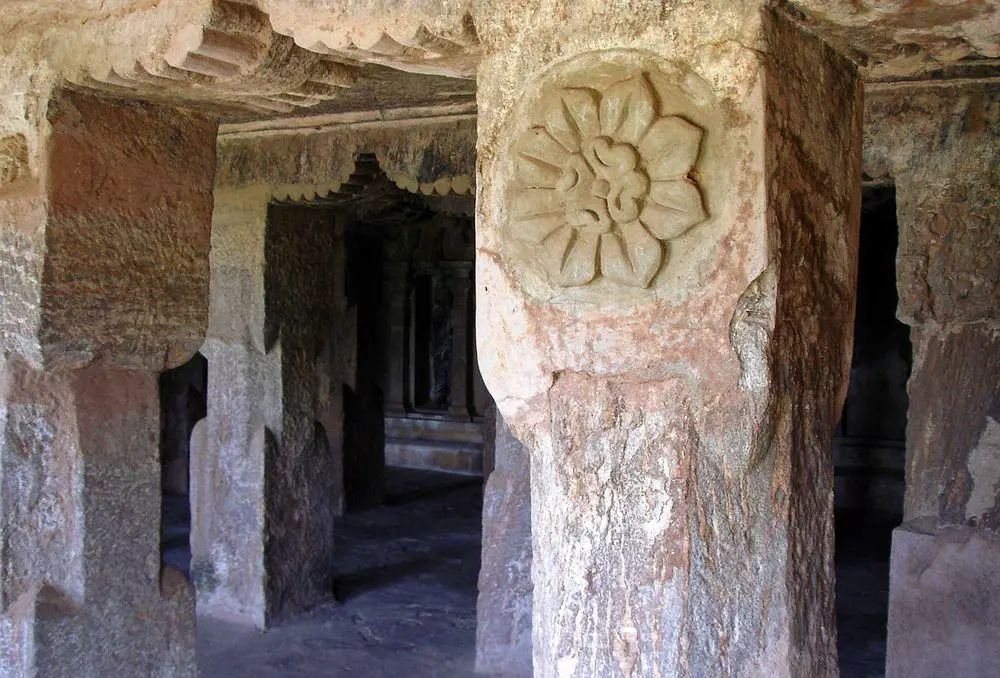
The first floor can be entered through one of 8 – 9 roughly shaped openings with massive square columns in between. The planning and style of sculptures on the first floor show that this was a Buddhist monastery – vihara. Part of the chambers is primitive rock-cut monastery cells. Hall is not completed, it contains 8 columns. Here are three separate sanctuaries for Trimurti – Brahma, Vishnu, and Shivu, each with a pillared hall in front. Trimurti is an important concept in Hindu religion – a triad of Brahma, Vishnu, and Shiva, the embodiment of cosmic functions of creation, maintenance, and destruction.
Walls on the first floor are adorned with frescoes showing scenes from mythological stories and made in the 7th – 8th century AD, some paintings here have been done also in later time periods.
The second floor contains the most amazing sculpture in this temple – a huge, 5 m long statue of Lord Vishnu in his Padmanabha aspect shown in a reclining posture. Also, this statue resembles similar Buddha statues in some other cave temples. The sculpture is made out of a single block of granite. Over Vishnu there is a canopy of multi-hooded Adi-Shesha, king of all nagas, the shrine is adorned with numerous other sculptures as well.
The facade of the third floor is adorned with numerous sculptures, including depictions of lions and elephants. There opens a beautiful view through these ancient sculptures towards other green hills and stands of palms below.
References
- Image gallery – Undavalli Caves. Andhra Pradesh. INDIA. by Dr. Mohammed T. Kahn. Worldisround. Last accessed in 10 May 2010
Undavalli Caves are included in the following article:
 Linked articles
Linked articles

Wonders of India
India is the seventh-largest country in the world by area, and, naturally, such a large area contains a huge amount of exciting attractions…
Wondermondo considers that India is the second richest center of architectural heritage in the world after Europe and maybe no single country in the world can match it in this respect.
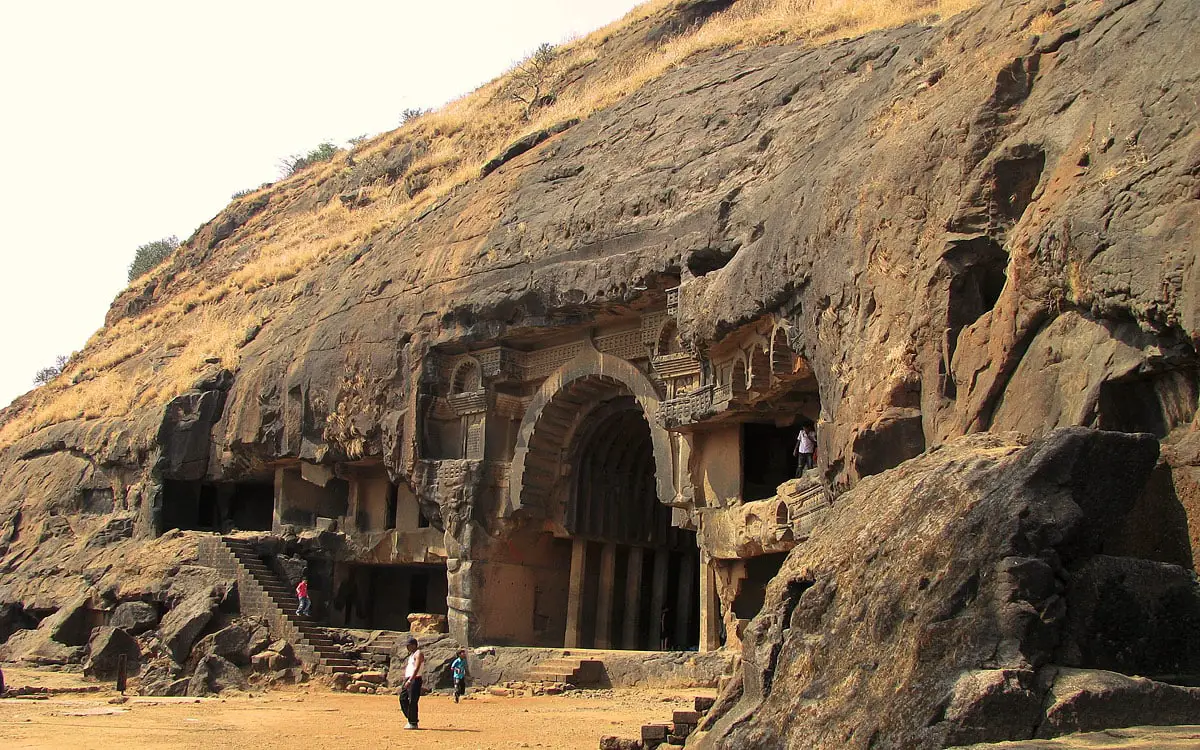
Rock-cut architecture and sculptures
Rock-cut architecture is a very ancient form of architecture – the oldest structures are more than 5 thousand years old. The resistivity of the natural stone and the constant climate inside these structures has preserved many art values around the world.

Buddhist shrines
Buddhism is one of the world religions and at the same time is a spiritual philosophy with diverse traditions, beliefs, and practices. There exists a rich tradition of architecture expressed in Buddhist temples and monasteries.
 Recommended books
Recommended books
Indian Painting: From Cave Temples to the Colonial Period
From refined portraits of resplendent maharajas to earthy depictions of divine rogues cavorting with milkmaids, Indian miniature paintings depict the world as it should be: radiant, plentiful, and passionate. These manuscript illustrations combine vibrant color with exquisite delicacy, offering immediate impact while also rewarding lengthy examination.
India: A Sacred Geography
A spiritual history of the world’s most religiously complex and diverse society, from one of Harvard’s most respected scholars.

